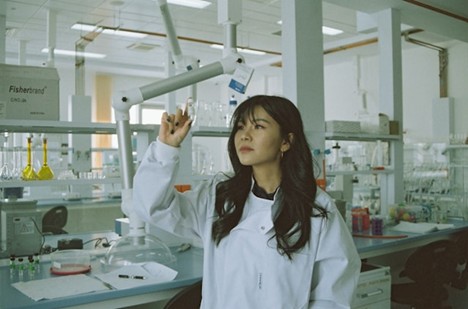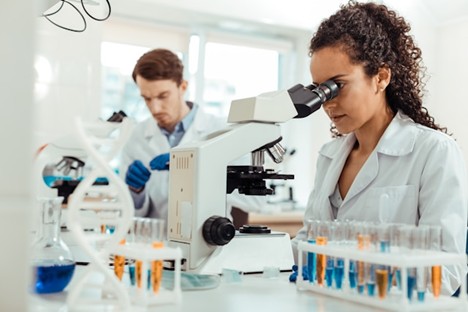Blending Bench Science with AI: Hiring the New Hybrid Workforce
A new kind of talent is rising in advanced laboratories and research environments: the hybrid scientific professional. These individuals combine the precision and discipline of traditional bench science – think cell culture, molecular assays, and experimental design – with the speed and sophistication of artificial intelligence and machine learning. It’s no longer enough to master lab techniques alone. Employers are now prioritizing candidates who can also interpret large datasets, develop predictive models, and integrate digital tools into their daily workflows.
As this blend of science and technology becomes the new norm, recruiter agencies are playing a crucial role in identifying and placing candidates who possess this rare and valuable dual skill set. Hiring teams increasingly recognize that filling these hybrid roles is not just a competitive advantage, it’s a necessity for staying at the forefront of innovation.
Why Bench Skills Still Matter
Excitement around AI may make bench work seem less glamorous, but there’s no substitute for hands-on experience. Someone who understands how to design realistic experiments, interpret unexpected results, or troubleshoot protocol issues brings a layer of intuition that algorithms alone cannot replicate. Consider the researcher who notices subtle contamination in a control sample or corrects a pipetting error before it skews a data set. These domain-specific instincts, gained from hours working at benches, remain the foundation of reliable science, even when AI is involved. When you hire someone who respects both tradition and technology, each lab decision benefits from depth and context.
Why AI Skills Add Transformational Capacity
On the flip side, basic familiarity with statistic software is no longer enough. Modern AI allows for rapid evaluation of large datasets, pattern detection, and forward-looking predictions. A hybrid employee can take raw biological measurements and feed them into machine learning models, derive insights faster, and propose next-step experiments in real time. They know not only how to capture data at the bench but also how to clean it, annotate it, and insert it into predictive workflows that accelerate timelines. This ability to connect hands-on research to digital strategy makes the individual a powerful asset in an era where speed and adaptability matter.
What Employers Should Look For
When organizations seek these new hybrid scientists, it means hiring individuals who demonstrate both experimental integrity and data fluency. During interviews, questions should focus on how candidates troubleshoot unexpected assay variation and how they interpret or visualize complex results using software tools. Look for examples of using machine learning in past work, not as a title, but as a process, how the candidate chose models, evaluated metrics, or improved outcomes using code or AI libraries. Strong candidates show both tested experimental technique and digital reasoning skills, and they describe how the two feed into one another to improve problem solving.
How Teams Can Support Hybrid Roles
Integrating a hybrid scientist effectively means creating environments where bench work and computational workflows intersect seamlessly. You might pair them with data engineers so they can develop pipelines that bridge experimental data collection and model building. Provide access to high-performance computers alongside traditional lab support and protocols. Encourage informal forums, or “data huddles”, where scientists show or share code-based approaches for analyzing experiments. Over time, teams that support this cross-pollination develop agility: they run bench experiments with vision for how the results will be modeled, and they iterate faster, with AI feedback shaping the next lab step.
Challenges and Considerations
That said, finding this combination of laboratory and computational skill is not easy. Hybrid talent is scarce, and there are often difficult tradeoffs in the hiring process. A candidate with deep computational skills may lack experience in assay validation, while a seasoned bench scientist may be intimidated by coding. It’s also possible for organizations to misalign expectations, assigning one person to too many tasks without adequate support. Successful integration requires realistic role definition, onboarding support, cross-team mentoring, and patience. The goal is to foster growth, not just fill a job title.

Measuring Impact Over Time
As hybrid professionals become embedded, workflow evolution begins to show tangible returns. Teams that once spent months manually analyzing post-experiment results can now automate clean-up, normalization, and model testing in hours. Project timelines shrink, labs are more data driven, and quality control improves. Organizations may track metrics such as reduced experiment variation, faster publication turnaround, or fewer repeat runs, all enabled by insight-rich analytics. This measurable impact helps you justify further investment in hybrid roles and inform training strategies or future position development.
Preparing for Tomorrow
Laboratories in biotech, pharma, agricultural research, or environmental science are all embracing this new workforce. Hiring professionals who can interpret sequencing data one moment and validate biological assays the next provides unmatched flexibility. Whether you’re scaling personalized therapies or tackling complex multi-omics datasets, blending science and AI is no longer optional – it’s transformative. Organizations preparing job descriptions now should emphasize both experimental competence and digital oversight, signaling to the market that your institute values integrated capability.
Full-Spectrum Talent Is a Strategic Investment
Building a modern R&D team means going beyond the single-focus hire. You’re seeking individuals who can hold pipettes and write Python scripts, who can troubleshoot an assay and train a neural network, who understand both biomolecules and data structures. This hybrid profile brings unmatched versatility and throughput.
Hiring such individuals sends a clear message: your organization embraces the best of tradition and technology. It communicates adaptability, future readiness, and scientific rigor. Ultimately, blending bench science with artificial intelligence isn’t just a staffing trend – it’s the workforce evolution that powers the next wave of discovery, performance, and impact.






